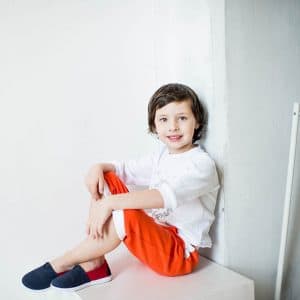If a lazy eye is not really ‘lazy’, then what is it exactly?
Lazy eye (amblyopia) is the most common neuro-developmental vision condition, affecting up to three percent of the population.
A lazy eye develops when a disconnect between the affected eye and the brain prevents the brain from recognizing all visual input from that eye.
This causes a reaction in the brain, called suppression.
Suppression occurs when the brain actively ignores all of the visual information coming from the affected eye to avoid blurry or double vision (diplopia). If not treated effectively, suppression can lead to an eye turn, also known as strabismus.
The presence of a lazy eye leads the brain to depend on the stronger eye, thereby causing a further weakening of the lazy eye, overtime.
This is where the lazy eye gets its name— the affected eye is called “lazy” because the stronger eye works more efficiently.
If you suspect your child has lazy eye, contact an eye doctor near you, who can diagnose and treat the condition.
SEE RELATED: Lazy Eye: The Latest Research
What are the consequences of a lazy eye?
When a lazy eye develops, it can no longer achieve normal visual acuity, even with corrective eyewear.
Lazy eye causes impaired binocular vision, depth perception, and eye-hand coordination— and can consequently lead to reading, learning and athletic difficulties.
Lazy eye typically presents before the age of eight, but may also develop later on as a result of:
- Strabismus
- Ptosis (drooping eyelid)
- High optical prescription
- Significant difference between the optical prescriptions in both eyes
Signs that your child may have a lazy eye
A lazy eye can be difficult to recognize because it generally develops in only one eye, without a noticeable eye turn.
Therefore, it is important to be aware of the signs that may indicate a lazy eye, because it can significantly affect a child’s quality of life.
The most common signs of lazy eye include:
- Frequently squints, rubs, or closes one eye
- Turns head to one side
- Reading difficulties
- Math difficulties
- Sports performance difficulties
- Accident prone
- Reduced fine motor skills
- Attention difficulties
If your child has a lazy eye, vision therapy is the most effective way to strengthen the affected eye.
LEARN MORE: Vision Therapy for Lazy Eye
Schedule an appointment with an eye doctor for a comprehensive eye exam of lazy eye, and to discuss any questions you may have about vision therapy.
Vision therapy can strengthen the eye-brain connections to improve the visual skills necessary for clear and comfortable binocular vision.










